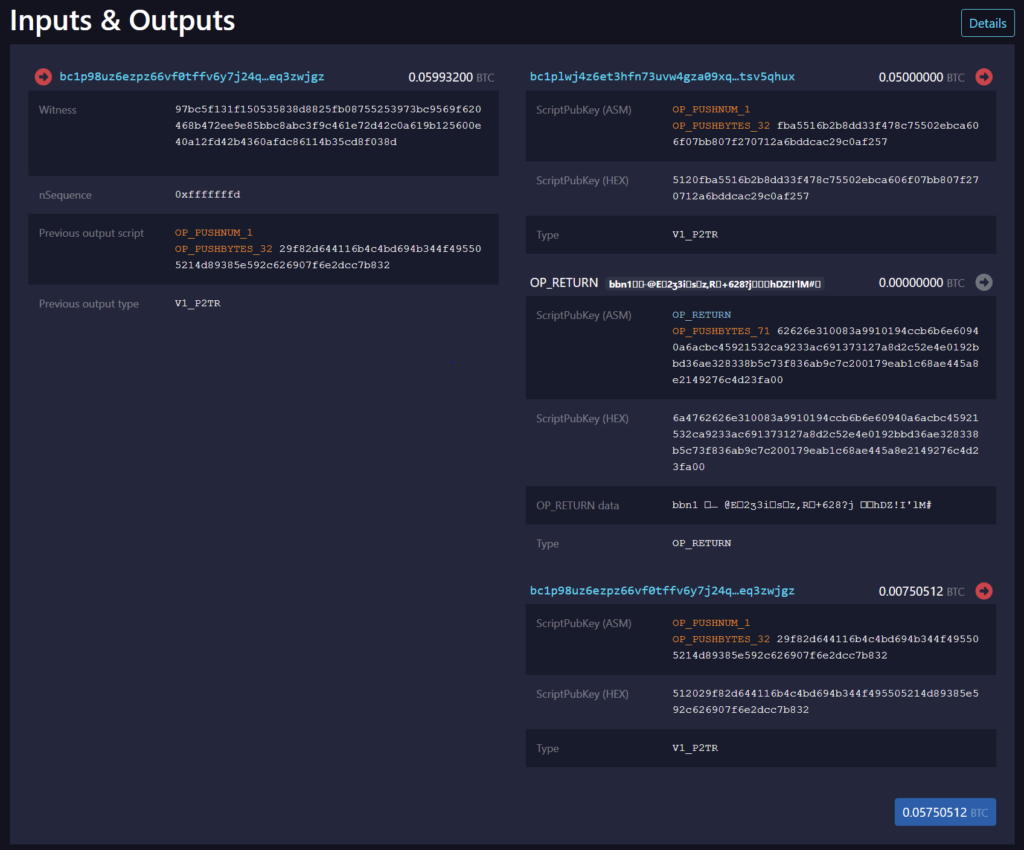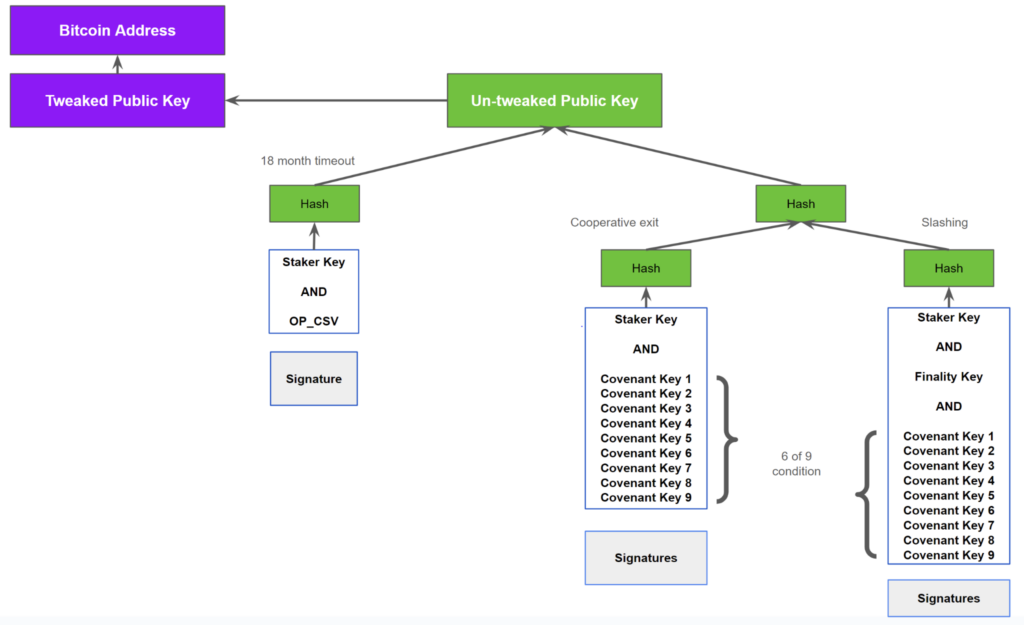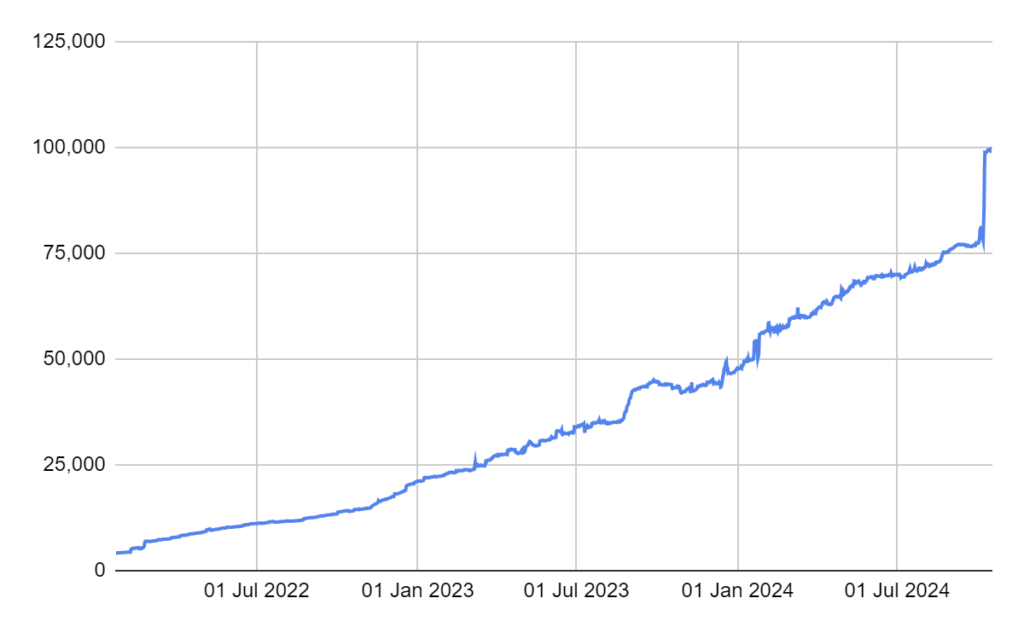Abstract: We look at Babylon, a Bitcoin based staking system which has already attracted inflows of almost 24,000 BTC. We compare Babylon to CoreDAO and note Babylon’s interesting usage of Tapscript spending conditions. We note that unlike Ordinals, Babylon is not using Taproot in a somewhat trivial way and is using it more in the way the developers intended. We conclude by arguing that whatever one thinks of Babylon and the new wave of Bitcoin staking systems, Babylon’s usage supports the claim that Taproot was an ingenious and impressive upgrade to Bitcoin and despite the low expectations of some, Taproot is proving to be a success.

Overview
Following on from our August 2024 piece on Bitcoin layer 2s and CoreDAO, in this article we focus on another apparent Bitcoin “layer 2”, Babylon. This Bitcoin staking system has even more funds locked in it than CoreDAO, just under 24,000 Bitcoin, at the time of writing. This is worth over $1.6 billion. As with CoreDAO, Babylon is not really a Bitcoin layer 2 and instead can be thought of as a system in which one can lock Bitcoin up using Bitcoin’s locktime features and in return, earn a yield in other alternative coins.
Babylon Labs
Despite 24,000 BTC being locked up, the Babylon blockchain or staking system does not exist yet and is still under development. At present, entities appear to be staking in order to earn bonus points. The platform is backed by an impressive roster of crypto VCs and Babylon has an affiliation with Binance, which might explain how the platform was able to attract so much capital. The platform also aims to position itself as the Bitcoin equivalent of EigenLayer. Babylon wants to be to Bitcoin what EigenLayer is to Ethereum. Much of the culture and ideas being developed from Babylon seem to have originated from the Ethereum ecosystem. The core idea of EigenLayer is re-staking, which enables using the same coins to stake on multiple systems at the same time, for an enhanced yield.
We are not going to evaluate the re-staking concept or the Babylon multi-staking protocol or potential Babylon blockchain, as with our CoreDAO piece, we are going to focus on the Bitcoin side of things.
Staking Mechanism & Taproot
As with CoreDAO, to stake into Babylon, you create a custom complex transaction, that essentially sends your own Bitcoin to yourself. You add a custom OP_Return output, which gives details about the staking, such as which validator will be used and where to send the rewards. An example Babylon staking transaction is shown below:

Source: https://mempool.space/tx/06d8def161112c6c004be7a1684d706731d9e54d5e706bee73c1f6f50418d3be
The staking transaction is not especially interesting compared to CoreDAO. The first output of 0.05 BTC is being staked and the third output is the change, with the middle output the OP_Return. The Bablyon team informed us that many exchanges had to upgrade their Bitcoin wallets to enable their clients to send Bitcoin to P2TR outputs with a Bech32m format address.
It is when one redeems from the staking system that the Taproot magic starts to happen. One can see a redemption transaction here, from the same address bc1plwj4z6et3hfn73uvw4gza09xqmc8hwq87fc8z2ntmh9v98q27ftsv5qhux. The redemption reveals that Babylon utilizes Tapscript and multiple spending paths in the Taproot tree. The below diagram illustrates the information revealed by a “cooperative exit” from the staking system. As a reminder, to redeem Bitcoin from a Taproot tree you must satisfy exactly one leaf and show a path to the Merkle root with hashes.
Taproot Redemption Tree for a Babylon Staker – Parts Visible With Normal Cooperative Exit

Source: BitMEX Research
In the above redemption situation, two of the paths to spend the money are hidden and two additional hashes had to be provided to get to the Merkle root. The chosen spending path required the staker to sign and for 6 members of a 9 member Babylon federation to sign. The spending condition is essentially a 1 of 1 and a 6 of 9.
Based on reading the Babylon protocol specification and reviewing other transactions, we were able to illustrate the full Taproot tree, with all the spending paths. The tree below illustrates three spending scenarios.
Full Taproot Redemption Tree for a Babylon Staker

Source: BitMEX Research
- Timelock – This first path requires the staker signature and the OP_CHECKSEQUENCEVERIFY (OP_CSV) opcode. The relative timelock is a 15 month period. This allows the staker to get their funds back without relying on the federation. This path is a higher branch in the tree, allowing for a more efficient redemption.
- On-Demand Unbonding – This is considered the normal or cooperative redemption path and requires the stakers signature and approval from the federation. This is like a cooperative exit in the Lightning network.
- Slashing – This is the final path and is similar to the unbonding case except that it requires an additional signature from a “finality provider”. We will talk more about this in the next paragraph.
Slashing
We criticised CoreDAO for not having a slashing system and we therefore referred to CoreDAO as “fake staking”. Babylon however, with its EigenLayer and Ethereum staking roots, does believe in slashing. In a way, in our view, Babylon is choosing the harder path now, by implementing slashing, but potentially constructing a more sustainable platform, with a yield that is “less fake”. However, as we explained, the Babylon yield generating system does not really exist yet, therefore slashing does not exist either at the moment. But there is still a redemption path in the Taproot tree for it. The third redemption path in the Taproot tree, is therefore not implemented yet, as there is no blockchain or finality agent. The idea is that once the system is live, the staker will need to pre-sign the slashing redemption path, with the funds in the transaction output going to a Bitcoin address controlled by someone else or perhaps burnt. To whom these funds may be sent to has not yet been determined by Babylon Labs. If the third path has been pre-signed by the staker, then there is real counterparty risk. But while it remains unsigned, stakers can think of Babylon as “risk free”.
Once slashing has gone live, if the third path has not been pre-signed, then the transaction would not be considered as a valid staking transaction and no rewards would be earned. We consider this a small weakness, since there is no way for observers of the Bitcoin blockchain to tell if it’s a valid staking deposit or not. However, for now, since this is not live, no such pre-signing is required. Therefore at the moment, as with CoreDAO, the system is counterparty risk free. You can always get your Bitcoin back without relying on anyone else (albeit with a longer locktime). Therefore, for now, this could be a good place to park your Bitcoin before the system goes live, however, how much rewards you may earn is highly uncertain.
Criticism of the Bitcoin Core Devs
The Bitcoin Core developers and protocol engineers have come under criticism in recent years from some quarters, in particular allegations that they are not implementing new protocol upgrades or adding enough new features. In addition, developers have been criticised, with some critics claiming that even if Bitcoin engineers are adding new features, nobody is using them or nobody will use them, because the developers are out of touch with the crypto industry and too inward looking.
We would argue that Babylon’s usage of the Taproot tree and other Taproot adoption is strong evidence to the contrary. In our view, Taproot is actually a pretty clever upgrade, enabling many new custom spending conditions without increasing downside risks. Hiding unused parts of the tree helps with privacy and scalability. On top of that, Taproot adoption metrics have been pretty strong, much stronger than we would have expected a few years ago. As of today, almost 100,000 Bitcoin are stored in Taproot outputs.
Bitcoin Stored in Taproot Outputs

Source: BitMEX Research
Conclusion – Taproot is a Success
Who would have thought that Merkelized Abstract Syntax Trees, an idea first proposed on the BitcoinTalk forum by Bitcoin engineer Johnson Lau in 2013 and formalised in 2016 would actually make it into Bitcoin and become a success? Babylon alone has $1.6 billion in these trees. And this is not a particularly trivial usage of Taproot either, it is not like Ordinal related images being stored, which some consider a bit silly, but both the key and the script paths are actually being used with significant amounts of money.
On the other hand, many readers may question the fundamental efficacy of Proof of Stake systems and re-staking may be even harder to conceptualise. Actually, liquid staking and re-staking systems could be the manifestation of the fundamental problems with Proof of Stake. Some readers may also consider Babylon as a bit altcoiny, with stakers incentivised by the idea of earning rewards in an alternative coin that does not even exist yet. However, Taproot adoption has to come from somewhere. Capital needs to be invested in building Taproot script systems and there needs to be examples of usage of Taproot scripts, for others to follow. Perhaps projects that one day do not rely on alternative coins or proof of stake systems could follow.
However, whatever one thinks of Babylon, Taproot is being used and Taproot is undoubtedly proving to be an ingenious idea and on top of that, a success. You have got to hand it to the Bitcoin developers for pulling this off, given all the constraints they work under.


